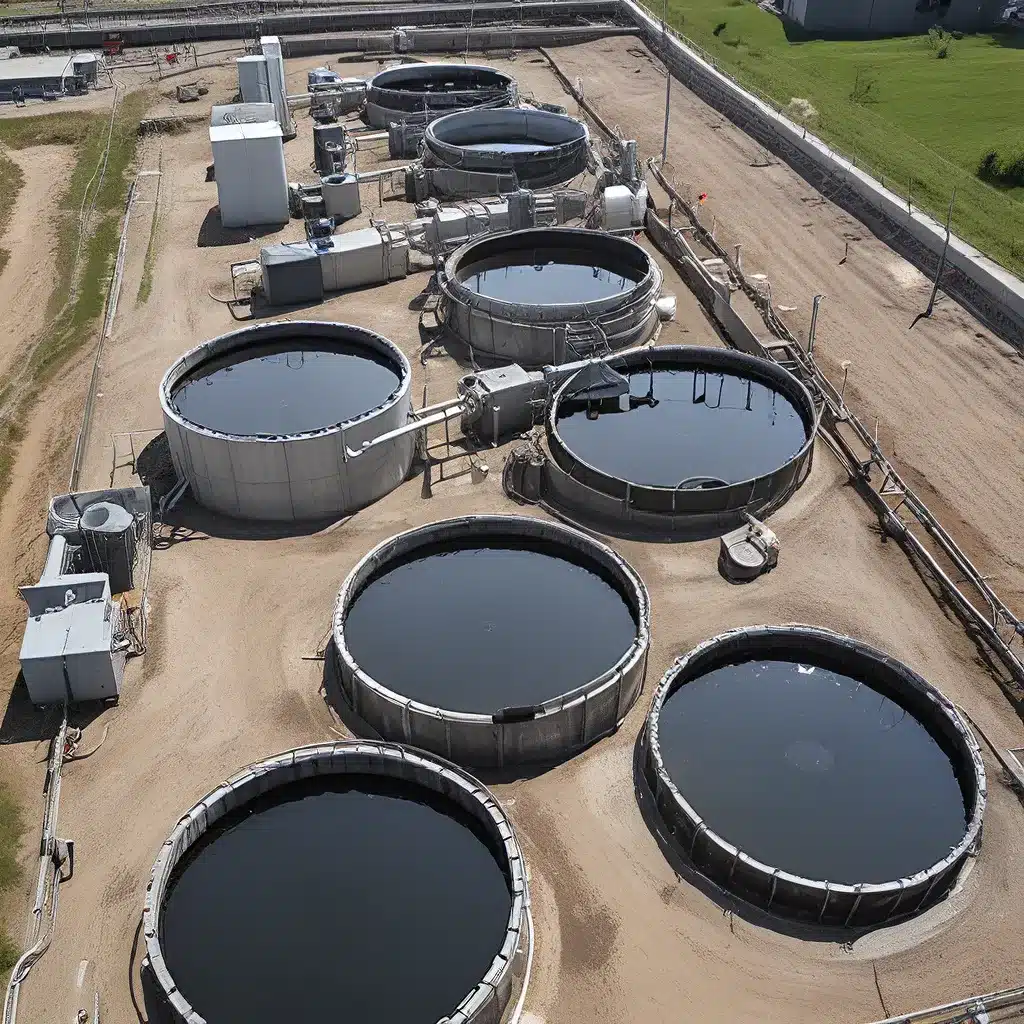
Imagine you’re the operator of a bustling wastewater treatment plant, tasked with ensuring the efficient and eco-friendly processing of millions of gallons of effluent every single day. It’s a daunting responsibility, isn’t it? But fear not, my friends – with the right strategies and cutting-edge technologies, we can unlock the true potential of your wastewater treatment system and drive it to unprecedented levels of optimization.
Taming the Tides of Wastewater
As the demand for clean water continues to skyrocket, wastewater treatment facilities are facing unprecedented challenges. From fluctuating influent volumes to ever-changing regulatory requirements, the obstacles can seem as relentless as the tides themselves. But with a deep understanding of the latest innovations and a strategic approach, we can ride these waves of change and emerge victorious.
Let’s start with the basics. Wastewater treatment is a complex and multifaceted process, involving a delicate balance of physical, chemical, and biological processes. It’s akin to a symphony orchestra, where each component plays a crucial role in creating a harmonious final product. And just like a symphony, any disruption in the flow can lead to a cacophony of inefficiencies and wasted resources.
Optimizing the Valve Control Symphony
One of the key components in this wastewater treatment symphony is the valve control system. These unsung heroes regulate the flow of fluids and gases, ensuring that the right amount of material is delivered to the right place at the right time. But as with any complex system, there are pitfalls that can compromise efficiency.
Valve sticking, leakage, and inadequate control can all lead to increased energy consumption, material wastage, and decreased productivity. But fear not, my friends – with the right strategies, we can harmonize this system and unlock its full potential.
Regular maintenance, calibration, and proper valve sizing are just the beginning. By incorporating advanced control algorithms, such as model predictive control (MPC) and fuzzy logic control, we can fine-tune the performance of our valve control systems, optimizing flow, minimizing pressure drop, and ensuring seamless integration with other critical components.
And let’s not forget the power of smart technologies. The integration of Internet of Things (IoT), wireless sensor networks (WSN), and cloud computing can provide real-time monitoring and remote control, allowing us to make data-driven decisions and respond to changes in the system with lightning-fast precision.
Mastering the Ebb and Flow of Wastewater
But valve control systems are just one piece of the puzzle. To truly optimize the efficiency of your wastewater treatment facility, we must consider the entire system, from the moment the influent enters the plant to the moment the treated effluent is discharged.
One of the key strategies is to focus on resource efficiency – maximizing the recovery of valuable materials, minimizing sludge production, and optimizing water reuse. By implementing advanced separation and color removal technologies, alternative energy solutions, and corrosion-reducing filtration systems, we can transform your facility into a veritable oasis of sustainability.
And let’s not forget the importance of proper system design and layout. Strategies like proper piping design, strategic valve placement, and minimizing dead space can drastically improve the efficiency of your wastewater treatment system, reducing pressure drops, minimizing material wastage, and ensuring smooth, uninterrupted flow.
Unlocking the Power of Continuous Optimization
But the journey to optimization doesn’t end there, my friends. In fact, it’s an ongoing process that requires vigilance, dedication, and a willingness to adapt to the ever-changing landscape of wastewater treatment.
Effective maintenance and monitoring programs are essential for ensuring long-term efficiency. Regular inspections, testing, and preventive maintenance can help us stay ahead of the curve, identifying and addressing any issues before they spiral out of control. And with the power of condition monitoring, we can use advanced sensors and data analytics to predict potential failures and take proactive measures to keep your system running at peak performance.
And let’s not forget the crucial role of our human operators and maintenance personnel. Providing comprehensive training and education programs can empower your team to not just maintain the system, but to truly understand it and identify opportunities for optimization. From mastering the fundamentals to staying up-to-date with the latest industry advancements, a well-trained workforce is the backbone of any successful wastewater treatment facility.
Embracing the Future of Wastewater Treatment
As we look to the future, the possibilities for wastewater treatment optimization are truly limitless. With the continued development of smart technologies, advanced control algorithms, and innovative treatment processes, the industry is poised to undergo a transformative revolution.
Inland Waters Inc., for example, is leading the charge in this exciting new frontier. By harnessing the power of IoT, cloud computing, and artificial intelligence, they are able to provide their clients with real-time monitoring, predictive maintenance, and intelligent decision-support tools – all with the ultimate goal of maximizing efficiency and minimizing waste.
But the true beauty of this journey lies in the collaborative spirit that underpins it all. By working together, sharing knowledge, and embracing the latest innovations, we can create a future where wastewater treatment is not just a necessary burden, but a shining beacon of sustainability and environmental stewardship.
So, my friends, let us embark on this quest to optimize your wastewater treatment system, one step at a time. With the right strategies, the right technologies, and the right mindset, we can turn your facility into a true marvel of efficiency and environmental responsibility. The tides of change may be relentless, but with our collective efforts, we can ride them to a brighter, more sustainable tomorrow.


